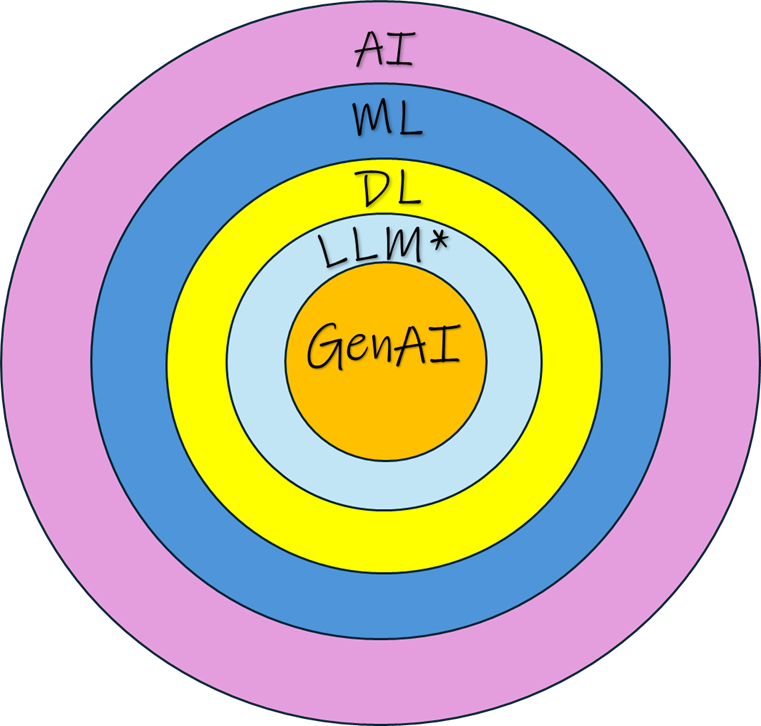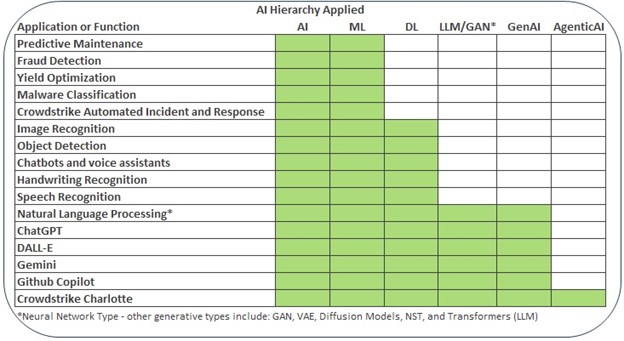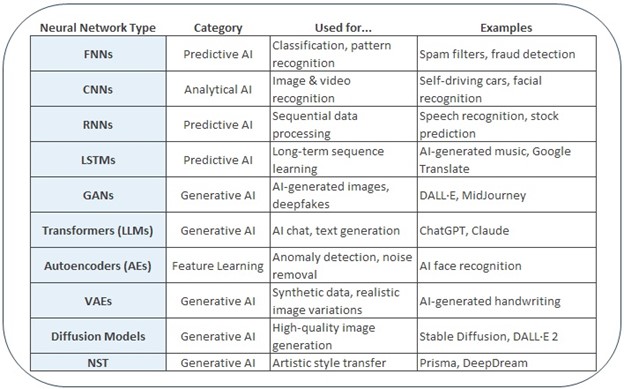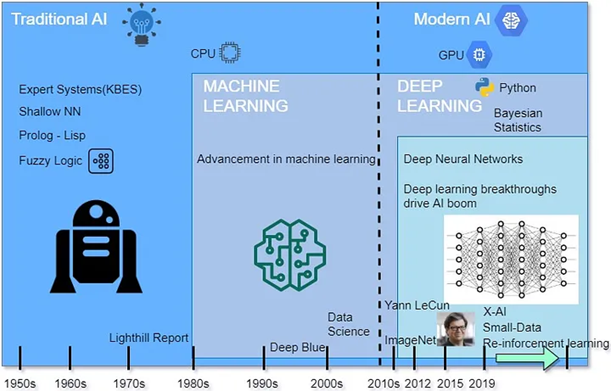The Heist
It started with an email. A routine request from the CFO to the finance department, instructing them to expedite payment to a new vendor. The message bore all the usual signs of legitimacy—familiar language, corporate jargon, and even the CFO’s signature, perfectly replicated. The email security system flagged nothing unusual.
The finance team complied, unaware that the CFO had never sent the request.
Behind the scenes, an AI-powered attack had unfolded over months. Cybercriminals had trained an AI model on leaked company emails, social media posts, and internal recordings. Using deepfake voice synthesis, they bypassed voice verification procedures, calling in to confirm transactions. AI-generated deepfakes participated in video meetings, subtly steering conversations to reinforce the ruse.
By the time the fraud was detected, millions had been siphoned into offshore accounts, and the organization was left scrambling for answers. This scenario, while dramatic, is not hypothetical. AI-driven fraud is an evolving threat that organizations must anticipate and mitigate.
As artificial intelligence (AI) becomes increasingly embedded in everyday tools and enterprise applications, organizations must navigate a complex landscape of risks. These include AI misuse, data privacy concerns, regulatory compliance, intellectual property issues, and legal liabilities.
One particularly concerning example of AI misuse is the emergence of AI-powered spearphishing and deepfake attacks. Cybercriminals now leverage AI to conduct highly convincing fraud, such as generating realistic deepfake voices and videos to impersonate executives. A well-crafted attack could involve AI-driven email spoofing, real-time deepfake voice calls, and even AI-simulated video meetings to manipulate employees into authorizing fraudulent transactions. As organizations integrate AI into their operations, they must also be aware of how malicious actors weaponize the same technology against them.
AI’s Contributing Factors to Organizational Risk
As our fictitious scenario depicts, AI’s rapid advancement and integration into workplace applications, development tools, and decision-making processes necessitate a proactive approach to risk management. This paper explores the key risks associated with AI adoption from an organizational perspective, focusing on AI integration in existing applications, the use of external AI services, and legal risks tied to third-party AI components. By understanding these challenges, organizations can implement safeguards to harness AI’s benefits while minimizing potential disruptions and liabilities.
1. AI Creep
Many widely used enterprise applications, such as Microsoft Office, Grammarly, and Zoom, have incorporated AI features with pass-through access-permissions or without explicit user opt-in. While these integrations offer efficiency gains, they also pose significant risks. A law firm using Microsoft Copilot to gain efficiency in its regulatory compliance processes could inadvertently expose confidential client information to Microsoft’s AI systems, leading to potential legal repercussions. The primary contributing factors to risk associated with AI creep include:
- Data Leakage: AI-enhanced applications may inadvertently transmit sensitive or proprietary data to AI models, raising security and privacy concerns. Employees may not be aware that their interactions with these tools involve data being sent to cloud-based AI services, which could expose trade secrets or confidential information.[1]
- Regulatory Compliance: Organizations may unknowingly violate data protection laws such as GDPR or CCPA by using AI-powered applications that process personal or confidential information. Compliance teams may struggle to track how AI features collect, store, and utilize data.
- Inconsistent AI Performance: AI-powered features within business applications may generate incorrect, biased, or unpredictable results, leading to operational inefficiencies and reputational risks.
2. Use of External AI Services
Companies increasingly rely on external AI tools such as ChatGPT, Claude, Github Copilot, and other generative AI platforms for automation, communication, and decision-making. While the benefits of these tools are undeniable, Samsung employees unintentionally leaked confidential semiconductor data when using ChatGPT for code optimization, demonstrating the risks of external AI use.[2] In industries where intellectual property protection is paramount, such leaks could severely impact competitiveness.
- Data Governance Issues: Employees may input proprietary or confidential data into external AI systems, leading to potential leaks and breaches. Without proper governance, companies risk unintentional data exposure.
- Security Risks: AI services operated by third-party vendors may not meet an organization’s internal security standards. Unauthorized access to these systems could compromise sensitive data.
- Intellectual Property Concerns: AI-generated content, code, and insights may not be clearly owned by the organization, leading to potential copyright or patent disputes.[3]
3. Legal Risks of AI Components in Products
Organizations that integrate third-party AI APIs into their products face significant legal and compliance challenges. For example, Kakao’s recent partnership with OpenAI raises potential compliance concerns.[4] If OpenAI-powered features are embedded in Kakao’s products, they may face regulatory hurdles in regions like Italy, where ChatGPT has been previously restricted due to privacy concerns. It may be for a similar reason that Kakao has banned the use of DeepSeek.[5] Organizations must assess jurisdictional AI laws before widespread deployment.
- Liability for AI-Generated Content: If an AI system provides inaccurate, biased, or misleading information, organizations may be held responsible for damages. This risk is particularly pronounced in industries such as finance, healthcare, and legal services, where errors can have severe consequences.
- Regulatory Challenges: Different jurisdictions impose varying restrictions on AI usage, requiring companies to adjust their AI deployment strategies accordingly. Countries with strict AI regulations may impose fines or even ban products that fail to comply.
- Vendor Dependency: Relying on external AI providers can introduce legal and operational risks if those vendors change their policies, pricing models, or data handling practices.
4. AI and Cybersecurity Threats
As AI adoption increases, so do cybersecurity threats that exploit AI vulnerabilities. For example, in our heist scenario earlier the attackers used a technique to embed hidden prompts within web content that AI-powered chatbots or assistants processed, leading to unintended or malicious outputs,[6] which were then used to enhance the deepfakes. Organizations must implement rigorous testing and validation processes to safeguard AI-driven systems:
- Malware Attacks via AI: Malicious actors can leverage AI models to create sophisticated malware that evades traditional security measures. AI-driven cyber threats can adapt in real time, making them harder to detect and neutralize.
- Indirect Prompt Injection Attacks: Attackers manipulate AI prompts indirectly through external content sources, tricking AI systems into executing unauthorized actions. This can result in AI chatbots generating harmful or misleading outputs.[7]
- AI-Generated Code Vulnerabilities: Developers using AI-powered coding assistants may inadvertently introduce security vulnerabilities or malware into their software, as AI-generated code is not always thoroughly vetted. Attackers could also manipulate AI training data to embed hidden exploits in seemingly benign code.
- Exploitation of AI Biases: Cybercriminals can exploit AI biases to manipulate decision-making processes, from automated fraud detection to hiring algorithms.
The list above is not an exhaustive one. Organizations can leverage the MITRE ATLAS Matrix[8] to systematically identify, categorize, and mitigate AI-specific cybersecurity threats. This framework provides structured insights into AI-related attack tactics and techniques, helping security teams proactively defend against emerging AI threats. Or they can call on Halock Security Labs to conduct a Risk Based Threat Assessment focused on particular areas of concern and guide them through 10 practical steps to managing AI risk.
Practical Steps to Managing AI Risk
- Conduct an AI Inventory – Identify all AI-powered applications, external AI services, and internally developed AI models in use within the organization. Add this to your configuration management database (CMBD.)
- Assess Data Exposure Risks – Evaluate what data AI systems access, store, and process, ensuring compliance with data privacy regulations.
- Implement AI Usage Policies – Define acceptable AI use cases, including guidelines on data input, access controls, and employee responsibilities.
- Establish Vendor Risk Management – Review AI-related security and compliance risks when engaging third-party AI providers and document contractual safeguards.
- Monitor AI-generated Outputs – Regularly audit AI-driven content, decisions, and recommendations to detect biases, errors, or security risks.
- Secure AI Against Cyber Threats – Implement protections against adversarial AI attacks, prompt injections, and deepfake-based fraud.
- Train Employees on AI Security Risks – Educate staff on AI-related threats such as deepfake scams, AI-generated phishing, and data leakage risks.
- Ensure Legal & Regulatory Compliance – Stay updated on AI regulations across different jurisdictions to avoid legal and compliance pitfalls.
- Define Incident Response for AI Breaches – Develop a response plan for AI-related security incidents, including fraud, misinformation, or data exposure.
- Continuously Reevaluate AI Risks – Regularly review and update AI risk assessments to address emerging threats and technological advancements. Integrate into IT risk management processes as another risk to manage.
Conclusion
The integration of AI into organizational workflows and products presents both opportunities and challenges. Just as AI can enable seamless automation and efficiency, it can also be leveraged by attackers to orchestrate sophisticated fraud and security breaches. Organizations that fail to recognize these risks may find themselves not just victims, but legally and financially accountable for AI-induced failures.
The deepfake-enabled financial fraud scenario is no longer science fiction; it is a reality organizations must anticipate and defend against. The ability to distinguish between legitimate and AI-generated interactions is now a core security requirement, not a luxury. Without a proactive AI governance strategy, organizations risk compliance failures, security breaches, and reputational damage.
AI threats do not remain static, and neither should an organization’s defenses. Continuous risk assessment, employee education, and AI-specific cybersecurity measures are critical to staying ahead. By proactively addressing AI creep, securing external AI interactions, mitigating cybersecurity threats, and understanding legal obligations, organizations can minimize risks while harnessing AI’s potential.
Appendix:
AI Hierarchy: AI>ML>DL>LLM (Neural Network)>GenAI
AI: Artificial Intelligence generally refers to the development of intelligent systems that can mimic human behavior and decision-making processes.
ML: Machine Learning is a specialized branch of AI that enables systems to learn and adapt from experience without requiring explicit programming.
DL: Deep learning is a specialized form of machine learning inspired by the structure and function of the human brain. It utilizes artificial neural networks made up of interconnected nodes that process and transmit information much like biological neurons.
Neural networks: A neural network is a type of artificial intelligence (AI) model designed to mimic how the human brain processes information. It consists of layers of artificial neurons that work together to recognize patterns, make predictions, and solve complex problems. A neural network that generates new content, rather than analyzing, classify, or predict, is the primary component of generative AI.
LLM: Large language models (LLMs) are a specialized type of deep learning model designed for processing and generating human-like text. They learn patterns and relationships between words and phrases by analyzing vast datasets. Through extensive training on diverse text sources, LLMs develop an understanding of grammar, semantics, and statistical language patterns.
GAN: A Generative Adversarial Network (GAN) is a type of artificial intelligence model designed to generate new, realistic data by using two competing neural networks:
- Generator – Creates new data (e.g., images, text, or audio).
- Discriminator – Evaluates the generated data to determine if it is real or fake
GenAI: Driven by generative neural networks (LLM, GAN, VAE) that can analyze vast amounts of information and generate content. Generative AI models have the extraordinary capability to recognize patterns and create entirely new, original content from scratch.[9]
Agentic AI: Agentic AI is equivalent to multiple generative AI systems integrated together to autonomously handle complex tasks.
AI Evolution Timeline[10]:
AI Platforms and Tools
NIST AI Risk Management Framework (RMF)
The AI Risk Management Framework (AI RMF) is intended for voluntary use and to improve the ability to incorporate trustworthiness considerations into the design, development, use, and evaluation of AI products, services, and systems.
https://airc.nist.gov/airmf-resources/airmf/
NIST AI RMF Playbook
The Playbook provides suggested actions for achieving the outcomes laid out in the AI Risk Management Framework.
https://airc.nist.gov/airmf-resources/playbook/
ChatGPT
A conversational AI developed by OpenAI, designed to engage in human-like discussions across various topics.
https://openai.com/chatgpt
Microsoft Azure AI
A collection of AI services and tools offered by Microsoft Azure, enabling developers to integrate AI capabilities into their applications.
https://azure.microsoft.com/en-us/products/#ai-machine-learning
GitHub Copilot
An AI-powered code completion tool that assists developers by suggesting code snippets and entire functions within popular code editors.
https://github.com/features/copilot
DALL-E 3
An AI system capable of generating detailed images from textual descriptions, facilitating creative visual content creation.
https://openai.com/dall-e-3
Midjourney
An AI tool that transforms textual prompts into artistic images, catering to designers and artists seeking creative inspiration.
https://www.midjourney.com
Stable Diffusion
An open-source AI model for generating high-quality images from text prompts, widely used for creative and artistic applications. Developed by Stability AI.
https://stablediffusionweb.com
Synthesia
An AI-driven platform that creates video content featuring lifelike avatars, streamlining the production of training and marketing videos.
https://www.synthesia.io
Jasper
An AI writing assistant that aids in generating content for blogs, social media, and marketing materials, enhancing writing efficiency.
https://www.jasper.ai
Grammarly
An AI-powered writing assistant that offers grammar, punctuation, and style suggestions to improve written communication.
https://www.grammarly.com
Canva Magic Studio
A suite of AI-powered design tools within Canva, including features like Magic Design and Magic Write, simplifying the design process.
https://www.canva.com
Looka
An AI-powered logo design platform that provides professional results even for users with no design experience.
https://looka.com
H2O.ai
An open-source AI platform offering machine learning and predictive analytics tools for businesses.
https://www.h2o.ai
TensorFlow
An open-source machine learning framework developed by Google, widely used for building and deploying AI models.
https://www.tensorflow.org
PyTorch
An open-source deep learning framework favored by researchers and developers for its flexibility and ease of use.
https://pytorch.org
IBM Watson
A suite of AI tools and applications designed to assist businesses in various sectors, including natural language processing and machine learning.
https://www.ibm.com/watson
Amazon SageMaker
A fully managed service by AWS that provides tools to build, train, and deploy machine learning models at scale.
https://aws.amazon.com/sagemaker
Google Cloud AI Platform
A comprehensive suite of AI and machine learning services provided by Google Cloud, supporting the entire ML lifecycle.
https://cloud.google.com/ai-platform
OpenAI Codex
An AI system that translates natural language into code, powering tools like GitHub Copilot to assist in software development.
https://openai.com/api
Replika
An AI chatbot designed to provide companionship and engage users in meaningful conversations.
https://replika.ai
Lumen5
An AI-powered video creation platform that transforms text content into engaging videos, suitable for marketing and social media.
https://www.lumen5.com
Descript
An AI-driven audio and video editing tool that simplifies the editing process through text-based commands and transcription.
https://www.descript.com
Copy.ai
An AI writing assistant that generates marketing copy, social media posts, and other content types to aid marketers and writers.
https://www.copy.ai
Frase
An AI-powered content optimization tool that assists in researching and writing SEO-friendly content by analyzing top search results.
https://www.frase.io
Surfer SEO
An AI-driven platform that provides data-driven recommendations to optimize website content for search engines.
https://surferseo.com
Virtuals Protocol
Create and Co-own Autonomous AI Agents.
https://www.virtuals.io/about?theme=dark
Hugging Face – A leading AI community and platform offering pre-trained models, datasets, and tools for building and fine-tuning machine learning applications.
https://huggingface.co/
Cohere – A natural language processing (NLP) platform providing enterprise-grade large language models (LLMs) and API access for AI-driven applications.
https://cohere.com/
Anthropic Claude – A family of AI assistants developed by Anthropic, focused on safety and alignment with human intent.
https://www.anthropic.com/
Mistral AI – A European-based AI research company providing open-weight LLMs designed for high efficiency and multilingual support.
https://mistral.ai/en
LangChain – The largest community building the future of LLM apps. LangChain’s flexible abstractions and AI-first toolkit make it the #1 choice for developers when building with GenAI.
https://www.langchain.com/langchain
Together AI – A decentralized AI model training and serving infrastructure, enabling collaborative AI development. https://www.together.ai/
AutoGPT – An experimental open-source project using GPT-based models to autonomously complete complex tasks by breaking them down into subtasks.
https://github.com/Significant-Gravitas/AutoGPT
AgentGPT – A browser-based AI agent that autonomously generates and executes multi-step plans using LLMs.
https://agentgpt.reworkd.ai/
Llama (Meta AI) – A family of large language models by Meta, available for research and commercial use.
https://ai.meta.com/
Perplexity AI – An AI-powered search engine providing detailed answers with citations, competing with traditional search engine.
https://www.perplexity.ai/
Jan AI – A privacy-focused AI assistant developed by former Apple AI engineers, emphasizing user data security.
https://www.jan.ai/
Claude API – A developer-friendly API for integrating Anthropic’s Claude models into applications.
https://www.anthropic.com/
[1] Yes, GitHub’s Copilot can Leak (Real) Secrets
[2] Samsung Fab Workers Leak Confidential Data While Using ChatGPT
[3] GitHub and Copilot Intellectual Property Litigation
[4] OpenAI partners with Korea’s Kakao after inking SoftBank Japanese JV
[5] Experts call on Korea to form ‘DeepSeek-pursuing’ task force
[6] This Prompt Can Make an AI Chatbot Identify and Extract Details from Your Chats
[7] LLM01:2025 Prompt Injection
[9] Machine Learning vs Deep Learning vs LLMs vs GenAI: Explained and How are they Different from Each Other?
[10] Traditional AI vs. Modern AI.
ABOUT HALOCK SECURITY LABS
HALOCK is a risk management and information security consulting firm providing cybersecurity, regulatory, strategic, and litigation services. HALOCK has pioneered an approach to risk analysis that aligns with regulatory standards for “reasonable” and “appropriate” safeguards and risk, using due care and reasonable person principles. As the principal authors of CIS Risk Assessment Method (RAM) and board members of The Duty of Care Risk Analysis (DoCRA) Council, HALOCK offers unique insight to help organizations define their acceptable level of risk and establish reasonable security.





